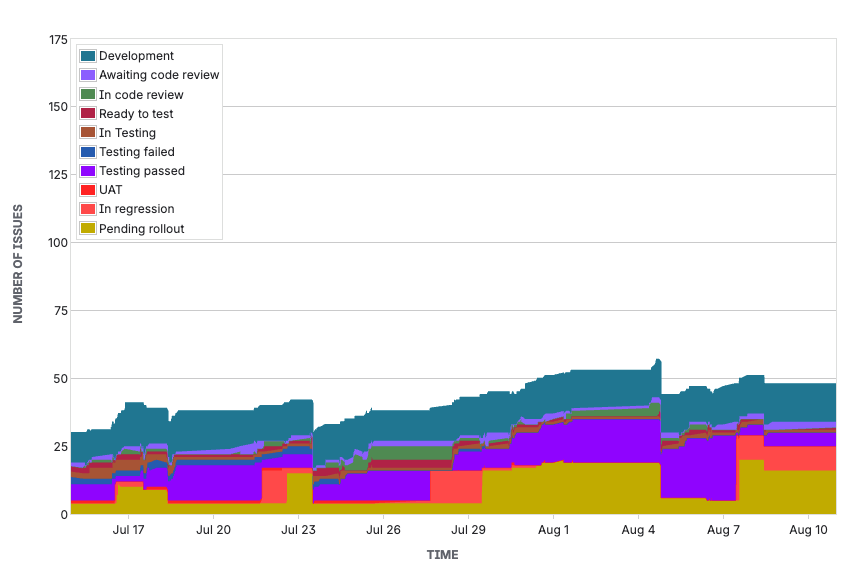“Typing is not the bottleneck” – illustrated. If you’ve followed me for a while, you’ll know how often I say this – especially since the rise of AI-assisted coding. Here’s an example.
This is a cumulative flow diagram from Jira for a real development team. It shows work only spends around 30% of its time in the value-creation stage (Development). The other 70% is taken up by non-value-adding activities – labour and time-intensive manual inspection steps such as code reviews, feature and regression testing, and work sitting in idle queues waiting to be reviewed, tested and released.

This pattern is the norm. This example isn’t even a bad case (they at least look to be shipping to prod once or twice a week).
If you increase the amount of work in Development – whether through adding more devs, or because of GenAI coding – it increases the amount of work going into all the downstream stages as well. More waiting in idle queues, more to test, bigger and more risky releases, most likely resulting in slower overall delivery.
It’s a bit like trying to drive faster on a congested motorway.
The solution is Continuous Delivery – being able to reliably and safely ship to production in tiny chunks, daily or even multiple times a day – one feature, one bug fix at a time. Not having to batch work up because testing and deployment have such a large overhead.
If your chart looks anything like this, you’ll need to eliminate most, if not all, non-development bottlenecks – turn the ratio on its head – otherwise you’ll probably not see any producivity benefits from GenAI coding.
Pingback: New research shows AI-assisted coding isn’t moving delivery | Rob Bowley